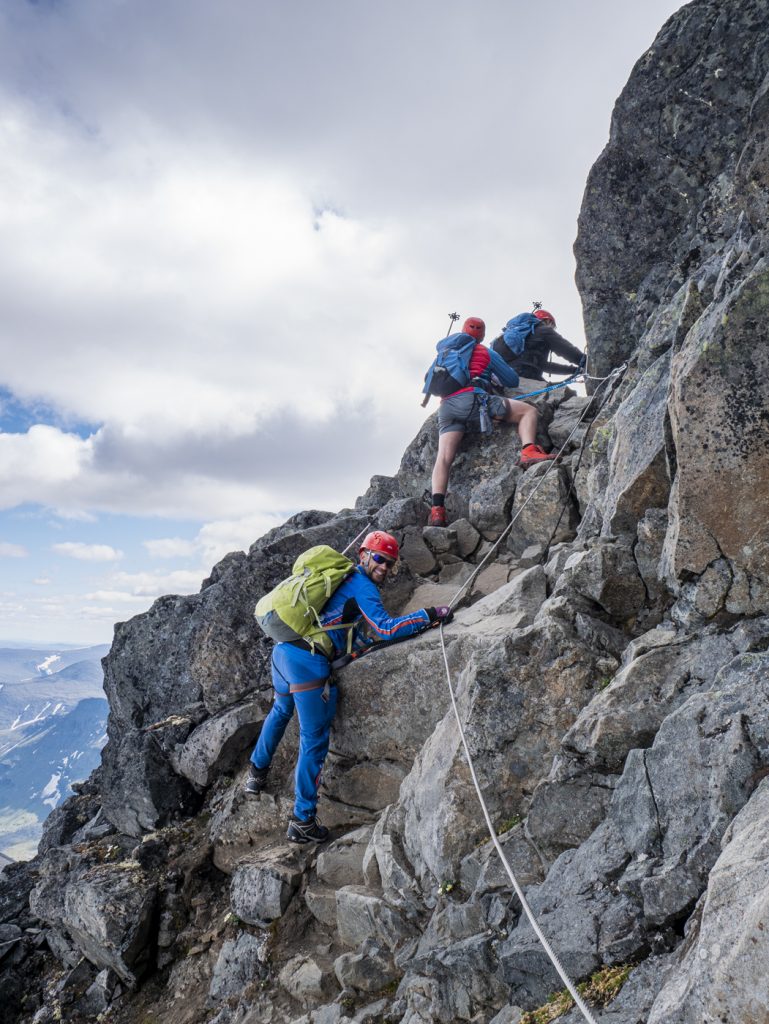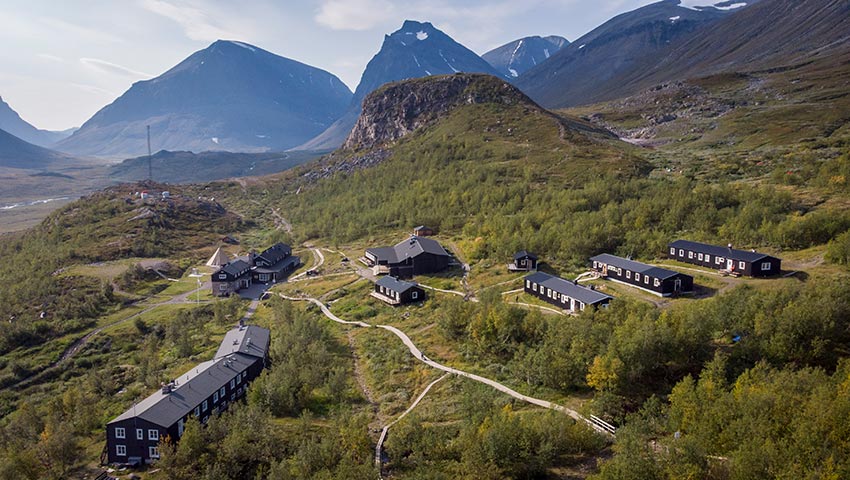Have you ever climbed a mountain?
Comments
-
Fantastic^^0
-
Now that makes way more sense 😄mookeywrench said:4000ft0 -
Multiple smaller mountains, repelled off a bunch of them, free climbed some.
Tallest peak was Mt Whitney in California, the tallest peak in the continental US. No gear for tat other than a ski pole.
Altitude sickness is a real thing. Headaches from hell if you aren't acclimated.
Do it.0 -
To answer the question, yes I have. I love hiking, it’s the best thing ever!Hope you’ll have a lovely hike, E.0
-
Doing Mt St Helens this summer. It'll be my tallest."I got memories, I got shit"0
-
Awesome!!! I really want to conquer a 14er, and have a feeling it might become somewhat of an addiction once I do. At least the non-technical ones. I am scared shitless of heights and want to work to overcome that. My fiancé says there is no reason to try to conquer that fear to which I reply "why not?"Bentleyspop said:I used to live in Colorado.
Climbed many peaks above 13k
Climbed 28 of the 54 14ers (Bentley got to 14)
Including multiple top outs on Longs Peak.
I highly recommend as a great physical and at times mental workout. "A smart monkey doesn't monkey around with another monkey's monkey" - Darwin's Theory0
"A smart monkey doesn't monkey around with another monkey's monkey" - Darwin's Theory0 -
I highly recommend doing it. Very few feelings as rewarding as completing these types of activities.Spiritual_Chaos said:
For Kebnekeise (only 6,960 ft), you can take one (a bit longer) route that is just hiking. And one a tad shorter, that involves crossing a glacier and some light climbing.F Me In The Brain said:Yes, but a big hike, not a climb where you need ropes and gear like that.
I think I will take the hiking route if I go. i think it is suppose to take 14hours, up and down from the top."A smart monkey doesn't monkey around with another monkey's monkey" - Darwin's Theory0 -
A lot of 14ers are really just long hard walks at altitude. Especially the ones closest to Denver.darwinstheory said:
Awesome!!! I really want to conquer a 14er, and have a feeling it might become somewhat of an addiction once I do. At least the non-technical ones. I am scared shitless of heights and want to work to overcome that. My fiancé says there is no reason to try to conquer that fear to which I reply "why not?"Bentleyspop said:I used to live in Colorado.
Climbed many peaks above 13k
Climbed 28 of the 54 14ers (Bentley got to 14)
Including multiple top outs on Longs Peak.
I highly recommend as a great physical and at times mental workout.
Mt. Sherman is on an old mining road. Not technical at all.
My avatar on here was shot there0 -
That's the way it seems. We ended up in Telluride/Ouray/Durango this past June. I really wanted to conquer Mt. Sneffles or Uncompahgre while we were there. I think the idea is too intimidating for my fiancé. She struggles going up and, naturally, my knees give me issues going down. I've mentioned Grays/Long peaks on other trips.Bentleyspop said:
A lot of 14ers are really just long hard walks at altitude. Especially the ones closest to Denver.darwinstheory said:
Awesome!!! I really want to conquer a 14er, and have a feeling it might become somewhat of an addiction once I do. At least the non-technical ones. I am scared shitless of heights and want to work to overcome that. My fiancé says there is no reason to try to conquer that fear to which I reply "why not?"Bentleyspop said:I used to live in Colorado.
Climbed many peaks above 13k
Climbed 28 of the 54 14ers (Bentley got to 14)
Including multiple top outs on Longs Peak.
I highly recommend as a great physical and at times mental workout.
Mt. Sherman is on an old mining road. Not technical at all.
My avatar on here was shot there
I also really want to do a 2 or 3 day backpacking trip some time
Wind River Range/PCT/Mint Hut (Alaska)."A smart monkey doesn't monkey around with another monkey's monkey" - Darwin's Theory0 -
Because of having orthostatic hypotension and being prone to vestibular migraine, I've never done anything very high up, but I have done three at around 10,000 feet: Mt Lassen to the north, and Pyramid Peak and Roundtop an hour or two east of here.
The biggest push I've done was starting at 6,000 feet and going to the top of Pyramid Peak (topping out at 9,985 feet) via Horsetail Falls and back in one day. The last two thirds of the return trip were done mostly by moonlight. I was leading a small party and had to scout ahead to make sure we were on the right track, so adding those extra miles was tough.
"It's a sad and beautiful world"-Roberto Benigni0 -
Sounds dangerous^^the whole moonlight part.
I hiked hard (for me) at high altitude and my legs were in pain the next day big time. No mountain tops, but were high to begin with.
Seems like op walks and runs a lot. Sure your body will react differently than someone who doesn't train.
Post pics if you do it!0 -
Grays/Torreys are an easy 2fer.darwinstheory said:
That's the way it seems. We ended up in Telluride/Ouray/Durango this past June. I really wanted to conquer Mt. Sneffles or Uncompahgre while we were there. I think the idea is too intimidating for my fiancé. She struggles going up and, naturally, my knees give me issues going down. I've mentioned Grays/Long peaks on other trips.Bentleyspop said:
A lot of 14ers are really just long hard walks at altitude. Especially the ones closest to Denver.darwinstheory said:
Awesome!!! I really want to conquer a 14er, and have a feeling it might become somewhat of an addiction once I do. At least the non-technical ones. I am scared shitless of heights and want to work to overcome that. My fiancé says there is no reason to try to conquer that fear to which I reply "why not?"Bentleyspop said:I used to live in Colorado.
Climbed many peaks above 13k
Climbed 28 of the 54 14ers (Bentley got to 14)
Including multiple top outs on Longs Peak.
I highly recommend as a great physical and at times mental workout.
Mt. Sherman is on an old mining road. Not technical at all.
My avatar on here was shot there
I also really want to do a 2 or 3 day backpacking trip some time
Wind River Range/PCT/Mint Hut (Alaska).
Longs should never be done as a first. It's not the mountain you want to find out you struggle at altitude. Plus you don't want to start your ascent later than 2 a.m.
I witnessed a rescue off the Trough one year and it was scary.

0 -
Thanks for the notes! How many do you have under your belt? There was also a 14er (I can't remember the name) that is near Durango. We discussed doingh that last June as it was rated easy. But I think she's worried about reaching areas where there might be steep ledges (i.e. similar to that of Angels Landing.Bentleyspop said:
Grays/Torreys are an easy 2fer.darwinstheory said:
That's the way it seems. We ended up in Telluride/Ouray/Durango this past June. I really wanted to conquer Mt. Sneffles or Uncompahgre while we were there. I think the idea is too intimidating for my fiancé. She struggles going up and, naturally, my knees give me issues going down. I've mentioned Grays/Long peaks on other trips.Bentleyspop said:
A lot of 14ers are really just long hard walks at altitude. Especially the ones closest to Denver.darwinstheory said:
Awesome!!! I really want to conquer a 14er, and have a feeling it might become somewhat of an addiction once I do. At least the non-technical ones. I am scared shitless of heights and want to work to overcome that. My fiancé says there is no reason to try to conquer that fear to which I reply "why not?"Bentleyspop said:I used to live in Colorado.
Climbed many peaks above 13k
Climbed 28 of the 54 14ers (Bentley got to 14)
Including multiple top outs on Longs Peak.
I highly recommend as a great physical and at times mental workout.
Mt. Sherman is on an old mining road. Not technical at all.
My avatar on here was shot there
I also really want to do a 2 or 3 day backpacking trip some time
Wind River Range/PCT/Mint Hut (Alaska).
Longs should never be done as a first. It's not the mountain you want to find out you struggle at altitude. Plus you don't want to start your ascent later than 2 a.m.
I witnessed a rescue off the Trough one year and it was scary.
 "A smart monkey doesn't monkey around with another monkey's monkey" - Darwin's Theory0
"A smart monkey doesn't monkey around with another monkey's monkey" - Darwin's Theory0 -
Depending on who you ask there is basically 8 14ers "near Durango". Most of them a class 3 or 4.darwinstheory said:
Thanks for the notes! How many do you have under your belt? There was also a 14er (I can't remember the name) that is near Durango. We discussed doingh that last June as it was rated easy. But I think she's worried about reaching areas where there might be steep ledges (i.e. similar to that of Angels Landing.Bentleyspop said:
Grays/Torreys are an easy 2fer.darwinstheory said:
That's the way it seems. We ended up in Telluride/Ouray/Durango this past June. I really wanted to conquer Mt. Sneffles or Uncompahgre while we were there. I think the idea is too intimidating for my fiancé. She struggles going up and, naturally, my knees give me issues going down. I've mentioned Grays/Long peaks on other trips.Bentleyspop said:
A lot of 14ers are really just long hard walks at altitude. Especially the ones closest to Denver.darwinstheory said:
Awesome!!! I really want to conquer a 14er, and have a feeling it might become somewhat of an addiction once I do. At least the non-technical ones. I am scared shitless of heights and want to work to overcome that. My fiancé says there is no reason to try to conquer that fear to which I reply "why not?"Bentleyspop said:I used to live in Colorado.
Climbed many peaks above 13k
Climbed 28 of the 54 14ers (Bentley got to 14)
Including multiple top outs on Longs Peak.
I highly recommend as a great physical and at times mental workout.
Mt. Sherman is on an old mining road. Not technical at all.
My avatar on here was shot there
I also really want to do a 2 or 3 day backpacking trip some time
Wind River Range/PCT/Mint Hut (Alaska).
Longs should never be done as a first. It's not the mountain you want to find out you struggle at altitude. Plus you don't want to start your ascent later than 2 a.m.
I witnessed a rescue off the Trough one year and it was scary.

I've got 28 plus multiple ascents of Longs, Sherman, Gray/Torreys, Evans/Bierstadt, Quandary
0 -
Altitude sickness is no joke. I got it in Wyoming, put me out of commission for a few days. Hydrate and acclimate slowly, especially if you are from a flat state!I'll ride the wave where it takes me......0
-
Hydration is the most important.mcgruff10 said:Altitude sickness is no joke. I got it in Wyoming, put me out of commission for a few days. Hydrate and acclimate slowly, especially if you are from a flat state!
If you don't live at altitude start upping your water intake a couple weeks out. It helps a lot.
Also cut back on alcohol consumption at altitude. You don't need as much plus add more water to the equation.0 -
Yeah, definitely not something I would recommend. We were all experienced in outdoors activity like this but this particular outing was not the best planned. Thankfully, the air was clear, the moon was near full and bright, and my vision back then was better than 20/20. I took responsibility for the trouble and made sure every leg of the return trip was safe by scouting ahead numerous times. My legs felt like rubber by the time we got back, but we all enjoyed the outing.Loujoe said:Sounds dangerous^^the whole moonlight part.
I hiked hard (for me) at high altitude and my legs were in pain the next day big time. No mountain tops, but were high to begin with.
Seems like op walks and runs a lot. Sure your body will react differently than someone who doesn't train.
Post pics if you do it!
"It's a sad and beautiful world"-Roberto Benigni0 -
Booked a room for three nights at the "mountain lodge" late July.

Now, I need to start looking for hiking boots"Mostly I think that people react sensitively because they know you’ve got a point"0 -
This is in Sweden? Looks gorgeous. Reminds me of Montana.Spiritual_Chaos said:Booked a room for three nights at the "mountain lodge" late July.
Now, I need to start looking for hiking bootsI'll ride the wave where it takes me......0 -
You're chatbot is super cute, but lacks the ability to navigate this site to see the physical running machine superstar fit dude you are.
Edit: but to answer your question: yes "and I turned aroundAnd I saw my reflection in the snow-covered hills"Post edited by Spunkie onI was swimming in the Great Barrier Reef
Animals were hiding behind the Coral
Except for little Turtle
I could swear he's trying to talk to me
Gurgle Gurgle0
Categories
- All Categories
- 149K Pearl Jam's Music and Activism
- 110.2K The Porch
- 280 Vitalogy
- 35.1K Given To Fly (live)
- 3.5K Words and Music...Communication
- 39.3K Flea Market
- 39.3K Lost Dogs
- 58.7K Not Pearl Jam's Music
- 10.6K Musicians and Gearheads
- 29.1K Other Music
- 17.8K Poetry, Prose, Music & Art
- 1.1K The Art Wall
- 56.8K Non-Pearl Jam Discussion
- 22.2K A Moving Train
- 31.7K All Encompassing Trip
- 2.9K Technical Stuff and Help








